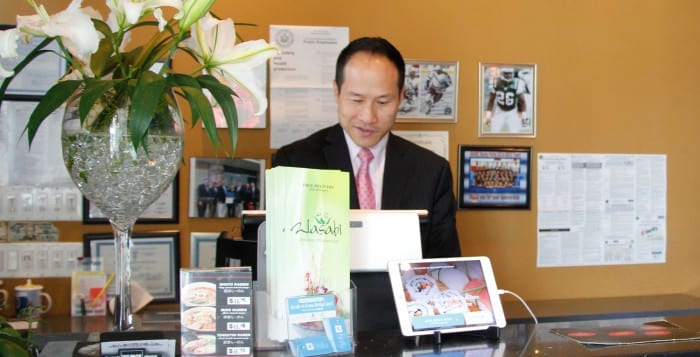Kings Park’s Chamber of Commerce and Civic Association have joined forces to seek out improvements to downtown Kings Park.
The Kings Park Chamber of Commerce has been working for years to try and revitalize the downtown. It has now partnered up with the civic association and together they have hired Vision Long Island to do a community vision prospectus with hopes of creating a bucket list of items that could transform the community.
“For a long time it has been a sore subject that our downtown is struggling as it is,” said Anthony Tanzi, president of the Kings Park Chamber of Commerce. “We’re hoping to create a vision of what they’d like to see. Hopefully everyone feels that they’re vested in the process. Then we will take that plan to the town board.”
According to Tanzi, this includes a series of public meetings where they will meet with community members to try and get the broadest representation of what the community wants. Tanzi said he hopes to see residents flooding those meetings and sharing their desires for downtown Kings Park. He also said he wants to engage as many groups as possible, including school districts, fire districts and more, to get a diverse amount of opinions.
“I want to hear all the wants and dreams,” Tanzi said. “Whether it’s for more restaurants, housing, apartments or brick sidewalks.”
The next meeting was set for Oct. 24 at William T. Rogers Middle School on Old Duck Road at 10 a.m.
Tanzi said that the chamber and civic are each paying $5,000 to Vision Long Island, and Vision is underwriting the final $5,000 for its overall $15,000 fee. Tanzi said he hopes Vision Long Island will identify Kings Park’s marketability and assets, highlight the resources and then couple that with residents’ desires for a new downtown.
“Then, hopefully, the Town of Smithtown will have to make a commitment to implement these changes and identify sources of funding.” Tanzi said.
Vision Long Island will be meeting with the town later in October, according to Tanzi, and said it hopes to have a full plan within the next six months.
Wastewater management and high taxes are two specific problems Tanzi said downtown Kings Park faces currently.
“We don’t have the ability to move forward because of the lack of sewers,” Tanzi said. “This makes it difficult for someone to come and want to invest in downtown.”
Suffolk County Legislator Rob Trotta (R-Fort Salonga) said he agreed and has written to U.S. Sen. Chuck Schumer (D-NY) expressing how desperately Kings Park needs sewers.
“I am writing you today to implore you to do all that is in your power to obtain funding to expand sewer access in the hamlet of Kings Park,” Trotta said in the letter. “Downtown Kings Park, with its railroad station just off Main Street and a beautiful state park in the heart of the town is ripe for economic revitalization.”
Sean Lehmann, president of the Kings Park Civic Association, said that this issue has been relevant in the civic association for years.
“Every year we give out membership forms, and on the forms we ask each member to list their top three concerns,” Lehmann said. “For the past four or five years downtown has been the number one concern.”
Lehmann also said the conditions of buildings in town are a concern as well as parking.
“We don’t have the type of businesses to drive customers out to shop here also,” Lehmann said.
He did say that some restaurants on Main Street are actually doing very well, including Ciros, Cafe Red and Relish. “But we’d like to invite more,” Lehmann said. “And sewers would really help with that.”
Lehmann also said downtown should have a focus on housing opportunities. “We want affordable housing opportunities,” Lehmann said. “It would be great for our kids who are just coming out of college.”
More than anything else, Tanzi said that resident participation is the most crucial factor.
“If we all fight for it and spend time and everyone feels that they’ve been heard, I think they’ll be more inclined to march to town hall and say what they want,” Tanzi said.


















